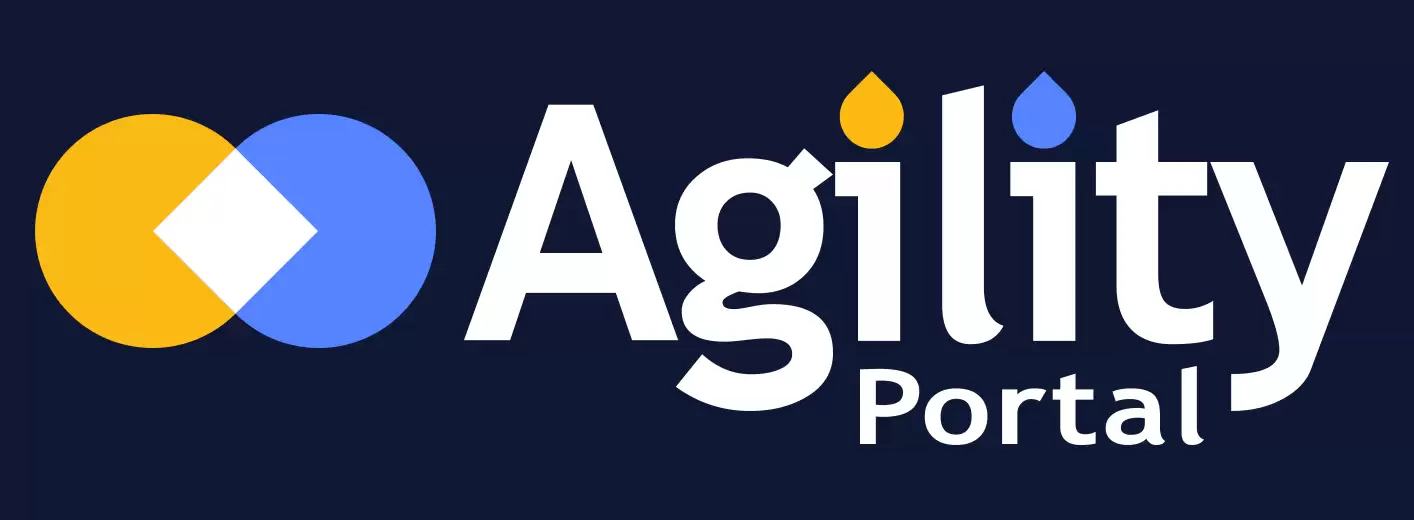Insight Blog
Agility’s perspectives on transforming the employee's experience throughout remote transformation using connected enterprise tools.
8 minutes reading time
(1563 words)
Unified Communications Infrastructure: A Must-Have for Remote Teams
Implementing a Unified Communications infrastructure streamlines collaboration for remote teams by integrating messaging, video conferencing, and file sharing into a single platform.
Despite recent moves to get everyone back into office work, remote work is in no rush to go away. Companies with teams across the globe don't find gathering them in one location all too cost-effective.
If anything, those who need their people back in the office have seen the benefits of remote work, leading to the rise of hybrid work models.
Whether staying fully remote or going hybrid, the importance of seamless communication with teams stands.
Being reachable through multiple forms of communication alone isn't enough; it also needs to allow for hassle-free switching between forms when necessary. A unified communications infrastructure can meet such a need and more.
All-In-One System
As the term implies, unified communications integrate various enterprise communication tools into an all-in-one system.
Examples like Microsoft Teams and Zoom Workplace come to mind, but unified communications treat them as elements in a larger framework.
Hardware and software that let users coordinate work in various ways aren't anything new.
During the early decades of the telephone, switchboard operators would connect a caller to their desired receiver by jacking into the correct outlet. If this sounds familiar, they were the predecessors of the private branch exchange (PBX) systems later used by businesses.
Today, businesses use a wide range of front-end asynchronous (time-delay) and real-time communication channels. On the back end, all these are integrated into a unified communications infrastructure.
| Asynchronous | Real-Time |
| Email messaging | Cloud telephony |
| Instant messaging | Video conferencing |
| Internal documents | DECT telephony* |
| Message boards | Voice over Wi-Fi calls |
| Pre-recorded videos | Face-to-face meetings |
| Knowledge bases | Contact centre |
*Digital Enhanced Cordless Telecommunications
The need for unified communications spiked during the COVID-19 pandemic. Businesses realised that their reliance on on-site infrastructure for communication and collaboration became their Achilles' heel.
When they adopted remote work, unified communications became a valuable asset by keeping team members connected no matter the distance.
Of course, its benefits don't stop with seamless communication.
- Cost reduction: Consolidating various tools into a single platform reduces software subscription costs. Team members save on travel expenses by attending or holding virtual meetings via the platform.
- Better customer service: Designated customer channels can be integrated into a unified communications infrastructure. Paired with internal ones, representatives can better facilitate their customers' needs.
- In-house IT staff optional: While maintaining an IT team in-house is still essential, the service provider delivers most of the IT management work. Even a small IT team is enough to manage the business's communication and collaboration needs.
- Fewer backdoors: Unified communications reduce the need for multiple separate apps, which can become security risks when not routinely patched. With an all-in-one suite, IT teams can easily monitor and counteract malicious attempts.
Despite being used interchangeably, unified communications and team collaboration are two different things.
They may overlap in terms of functionality, but sending a file or video via a unified communications infrastructure doesn't always indicate collaborative intent. That said, seamless collaboration is impossible without communication.
The Typical Tech Stack
Unified Communications as a Service (UCaaS)
UCaaS is the bedrock that holds the entire system steady. It refers to an IT business model where the service provider is responsible for all aspects of the infrastructure.
The business doesn't own the system but doesn't have to manage it.
Gartner explains that UCaaS consists of six communications functions, namely:
- Enterprise telephony
- Various meeting media
- Unified messaging
- Instant messaging
- Mobility
- Communications-enabled business process
One crucial advantage of UCaaS is its customisability.
The suite can be tailored to satisfy the company's needs, keeping costs to a minimum. Similar to other as-a-Service models, the company can opt for single (dedicated use) or multi-tenancy (shared among other tenants).
Contact Centre as a Service (CCaaS) Integration
Whereas UCaaS focuses on internal communications, CCaaS focuses on external – as in customer service. Some technologies under this model include:
- Automatic contact distribution
- Interactive voice response
- Predictive dialling
- Workforce management
As far as unified communications are concerned, UCaaS and CCaaS are a match made in business heaven. As CCaaS manages the customer's call, the customer service representative can use UCaaS to relay the caller's needs to the rest of the team. The combination is found to have improved customer satisfaction and ROI.
Communication Platforms as a Service (CPaas)
As the term suggests, CPaaS provides communication platforms mainly to retrofit companies' legacy apps and platforms with new technology. It involves delivering partly complete apps and application programming interfaces (APIs), among other resources. In-house developers then use these to integrate into their current tech.
Businesses without in-house developers can still benefit from CPaaS providers via co-creation. In this arrangement, they involve third-party service providers to understand and develop the solutions they need. Sometimes, organisations also work with an enterprise connectivity consultant, such as CommQuotes, to ensure these integrations align with both technical requirements and long-term communication strategies.
Meeting Room Modernisation
Hybrid work setups would still want to invest in modernising their brick-and-mortar meeting rooms. Team members who can't attend a physical town hall still deserve to participate using robust unified communication tools. All the more if they serve a crucial role that's relevant to the topic at hand.
As of this writing, meeting rooms can benefit by incorporating business communication technologies such as but aren't limited to:
- AI-assisted functions (e.g., transcription)
- Intelligent audio and video optimisation
- Digital whiteboards or LED interactive screens
- Video conferencing solutions
- All-in-one meeting room display solutions
Project Management System
When Henry Gantt introduced the Gantt chart in the early 1900s, he gave businesses their first real project visualization tool. It laid the groundwork for what we now call project management.
Fast forward to today's fast-paced, competitive environment, and the need for structured project management has only grown. Without it, teams lose hours in endless discussions, struggle with misaligned priorities, and watch productivity slip through the cracks.
While Gantt charts remain useful for organizing timelines and dependencies, modern businesses need more than static planning tools. The Project Management Institute (PMI) defines project management as the application of knowledge, skills, and tools to plan, execute, and deliver projects effectively.
One of PMI's key insights?
Success hinges on communication—not just talking, but turning communication into action.
Why Integration MattersRemote and hybrid teams face a unique challenge: conversations happen everywhere—chat threads, video calls, emails—but they don't always translate into measurable outcomes.
Without a bridge between communication and execution, discussions can get lost in the shuffle.
That's why integration between communication and project management tools is no longer optional—it's essential.
This closed-loop integration ensures that ideas turn into action by:
- Creating tasks directly from messages or meetings so no decision slips through the cracks.
- Tying conversations to milestones or deliverables, ensuring context stays with the work.
- Automatically updating chat channels when task statuses change, keeping everyone aligned.
- Embedding visibility into timelines and dependencies right within the communication hub.
- Using @mentions to connect people directly to the work items they own.
Imagine this: your team decides in a group chat to update a website feature.
With an integrated platform like AgilityPortal, that conversation instantly generates a task, assigns it to the right team member, links it to the relevant project, and sets a deadline—all without leaving the platform.
Context is preserved, accountability is clear, and progress is trackable.
Custom Workflows for Every TeamThe most advanced unified platforms go further, offering customizable workflows tailored to how different teams operate:
- Marketing teams can design workflows for campaign planning and approvals.
- Product and development teams can run agile sprints and code reviews.
- HR and operations can streamline onboarding, compliance, or training projects.
Instead of forcing teams into a rigid structure, a flexible project management hub adapts to each department's needs—while keeping everyone connected within the same unified system.
Supercharge Your Remote Team Collaboration with AgilityPortal
A truly effective digital workplace brings together all the essential tools your team needs into one seamless hub—transforming remote and hybrid work from a daily challenge into a powerful competitive advantage.
AgilityPortal delivers exactly that: an integrated platform where teams can communicate, collaborate, and coordinate without the constant friction of switching between disconnected apps.
With its all-in-one approach, AgilityPortal combines chat, video meetings, document collaboration, task management, project tracking, and shared calendars—all in a single, intuitive interface.
This unified experience eliminates the productivity drain of context switching while ensuring that every conversation, file, and project stays organized and easy to find.
Designed for today's distributed workforce, AgilityPortal offers:
- Robust mobile access to keep frontline and remote employees connected on the go.
- Granular notifications that help cut distractions and protect focus.
- Enterprise-grade security to safeguard your company's data and communications.
- Workflow automation and AI-powered insights that help teams work smarter, not just harder.
Whether you're managing a small agile team or leading a large global organization, AgilityPortal gives you the collaborative infrastructure to stay aligned, strengthen culture, and deliver results—no matter where your people are.
Wrapping up
Remote work isn't about to disappear anytime soon, but it needs a much-needed update to meet current standards.
Thanks to their customisability and cost-effectiveness, unified communication solutions will be indispensable to remote and hybrid businesses in the future.
Categories
Blog
(2600)
Business Management
(319)
Employee Engagement
(207)
Digital Transformation
(173)
Intranets
(119)
Growth
(118)
Remote Work
(61)
Sales
(48)
Collaboration
(37)
Culture
(29)
Project management
(29)
Customer Experience
(26)
Knowledge Management
(21)
Leadership
(20)
Comparisons
(5)
Ready to learn more? 👍
One platform to optimize, manage and track all of your teams. Your new digital workplace is a click away. 🚀
Free for 14 days, no credit card required.














